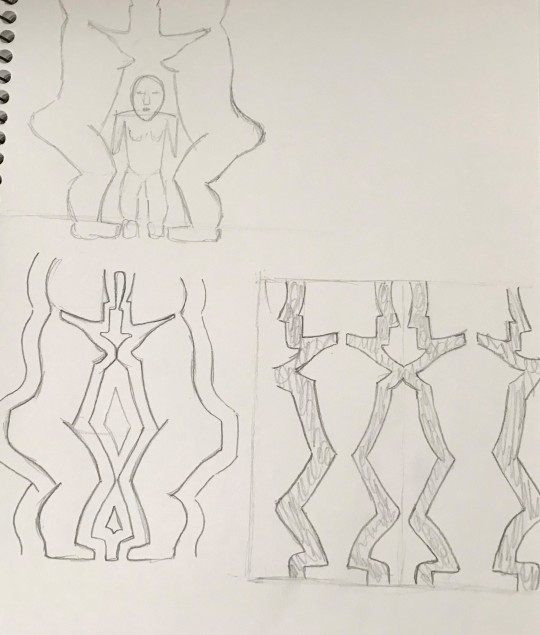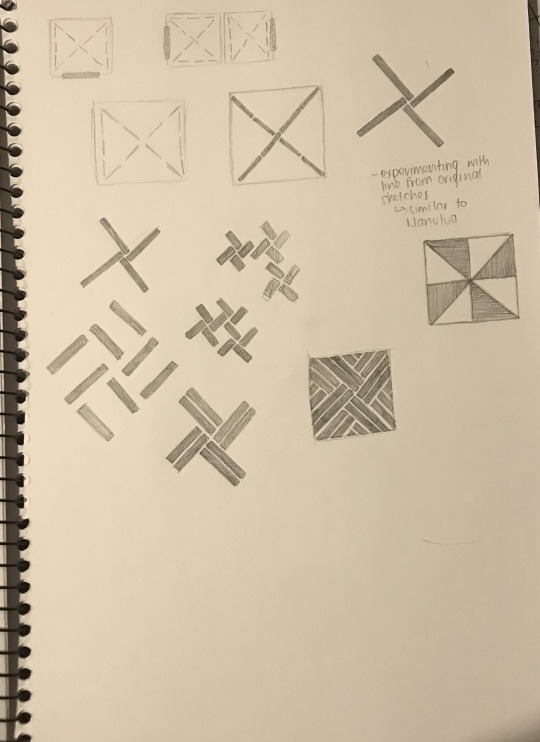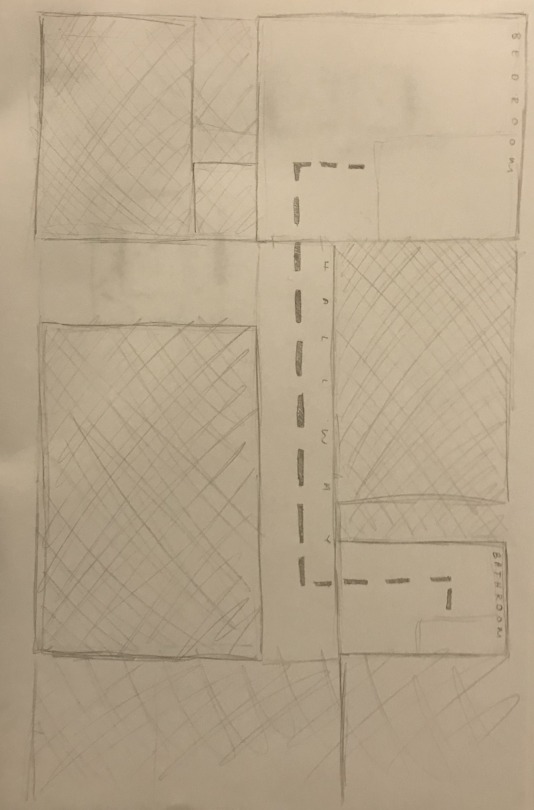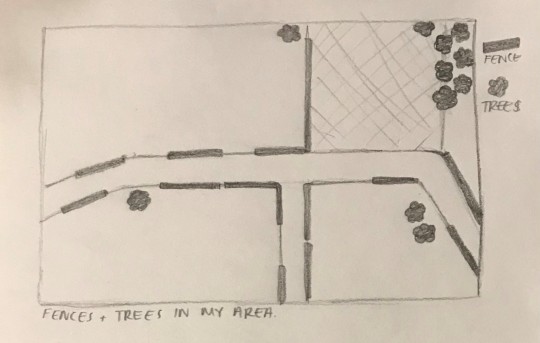Don't wanna be here? Send us removal request.
Text
Final Animation
My final animation uses the story of Hikule’o to communicate change, growth and confidence within one’s culture and heritage. Hikule’o was the creator of Tongan islands. In the opening scene of my animation Hikule’o throws stones into the ocean, creating an island that then grows a tree. The island is a motif for myself, recognising the stories of creation by Hikule’o as well as her being the ruler of Pulotu, where it is believed our spirits came from and where they will return to after death. The bird represents the transference of knowledge and the journey taken to retrieve knowledge. I think of the Manulua as a connection between relationships and in my animation I use this to symbolise the connections we have throughout our lives whether that be family, friends or partners. I use one of my manulua patterns to represent the change or progression in one’s life. Here is where I move from hand-drawn animations to digital animations symbolising progression in time, from the Hikule'o era and into the present. This can also be seen as coming from the spiritual world Pulotu into the earthly world we live in. I included another pattern that I developed from my pattern book that represents Hikule’o. I developed this geometric pattern from the statues of Hikule’o and made something new. I use this to communicate how in today’s day we take inspiration from out heritage and always draw back from our past and from our culture and how these things influence our lives today. The bird returns back to the island and the island then is prosperous. The bird transfers the knowledge that it has gained from its journey and transfers that back to the island, which then benefits from it.
I had a lot of fun making this final pattern, even though I found it pretty challenging. I found it hard coming up with ideas when I first started but after I found out about Hikule'o in this video (https://www.youtube.com/watch?v=ebBCFHPXeGY) I felt really inspired by her story and I was also inspired to learn more about what Tonga was like before Christianity. I chose patterns from my pattern book that represented change and progression as this was something I feel is happening all over the world and well as personally and I felt like these patterns and the story of Hikule'o fit together nicely. I had a lot of trouble drawing the animations as they took a long time to draw so I spent a long time doing that as well as trying to figure out how to fix the problems I was having. I has trouble with the sizing of my images as seen in my test animations and I also had trouble with keeping the lighting in my picture consistent. I think animating my patterns added a lot to the meaning of my patterns. It helped to show progression and change which was exactly what I was going for. Overall, I was able to finish my animation to a degree which I was happy with and that I think represents my intention and message well.
0 notes
Text
Test animation - size
Here I figured out how to make each photo the same size in photoshop, this did take a few tries but after experimenting and playing around with different sizes and shapes I finally figured it out.
I used the previous Hikule'o animation images to do this.
0 notes
Text
Test animation - Hikule'o
I based this animation on the idea that Hikule'o created the islands of Kao, Tofua, Hunga Haapai, Hunga Tonga, Late and Fonualei by throwing stones into the ocean from the skies, so this is what is depicted in this test animation. I used the Tapa pattern of the Leva berries to represent the stones. This pattern is three dots that is often used throughout Tapa designs. I thought that this would be fitting to use as the stones, as this pattern represents something from the earth and this could symbolise the creation of land.
I still had trouble getting the images the same size but I wanted to focus just on the animation technique itself and play with different speeds and different drawing techniques.
0 notes
Text
Test animations - Manulua Bird
My first test animation is exploring the meaning behind the Manulua. This pattern symbolizes two birds, representing two families or two people coming together and joining as one. I had the idea to animate the two birds coming together and forming the Manulua and I am vey happy with the result. I did have some trouble with the sizing of the images, its obvious that each image is a different size throughout the animation and I couldn't figure out how to make them all the same size which was a bit frustrating. Besides that I am pretty happy with how this turned out
0 notes
Text
Hikule'o
Hikule'o is a Tongan Goddess who rules over Pulotu, the spiritual realm from which these gods and goddesses come from as well as where Tongans originate from and where it was believed one would return to when they died.
Hikule'o was a very powerful and strong Goddess who was among, if not the highest deity in ancient Tongan mythology, this links back to the hierarchy in Tongan families , with the highest rank in ones family is called the Fahu, which the fathers eldest sister. Hikule'o was seen as a creator as she created the islands of Kao, Tofua, Hunga Haapai, Hunga Tonga, Late and Fonualei by the stones she had thrown into the ocean from the skies.
Pulotu is thought to be the homeland of the Tongan peoples, and after deather the spirit will return to Pulotu. This idea is heavily involved in Tongan funerals, as if the family does not uphold the correct rituals the spirite will be rejected from Pulotu and Hikule'o.
references:
https://www.youtube.com/watch?v=W1iqTDJc6IM
https://www.youtube.com/watch?v=ebBCFHPXeGY
https://findwords.info/term/hikule'o
1 note
·
View note
Text
Final Animation - Artist model
Boy directed by Taika Waititi
The short animations that are featured in this movie are meant to represent Rocky's perspective throughout the film. All animations are quite juvenile, looking like they are drawn by a kid, on notebook paper.
13:21 - 13:25 : car animation
This is the first animation in the film. As Rocky's dad pulls into the driveway, he looks scared and concerned as he doesn't know who this is, all he sees is a black car with three shadows inside, and the animation perfectly represents this, depicting a shadowy car and three angry looking faces inside it.
58:57 - 59:05 : cemetery
This is my favourite animation out of the three. In this scene we see Rocky looking down at his dad at his mothers cemetery from a distance. This scene shows that even though Rocky is still very young, he is able to understand how his dad is feeling, with the animation showing his dad crying over his mums grave.
1:11:26 - 1:11:30 : house
in this scene, Rocky's dad destroying the house because his friends betrayed him, and we can see how Rocky sees this situation. The animation shows his dad as a giant, bursting out of the house and destroying it. Something I find really interesting about this scene is that while his dad is depicted as this huge angry giant destroying the house in the animation, he's also crying. I think that most of the time we think that kids don't understand the situations that they are put in or the ones that they see, but I think this scene really shows that Rocky is able to understand what his dad is going through to a certain extent. He can see that his dad is angry but he can also see that behind that he is also very sad, this is evident in the previous animation as Rocky can see that his dad is sad and I think that idea translates into this animation as well.
I think the animation in this film is very creative and a perfect way to showcase the feelings of a little kid and how they see the world. It really shows the world through Rocky's eyes, showing the audience how a child might contextualize what's going on around him and what emotions that he comes across. The hand-drawn animation style helps to further the point that these animations were drawn by Rocky, as they look like something a little kid would draw. I decided to explore hand-drawn animations because of this, I think that this would be a good way to depict different eras in my animation, maybe using the hand-drawn animation style to showcase time in the past and then developing that into digital animations, using that progression to emphasize different times in the animation.
0 notes
Text
WEEK 7 - Animation 3
This animation represents change and moving forward, as well as peace and reflection
0 notes
Text
WEEK 7 - Animation 2
In this design I have each quarter of all the Manulua patterns moving at different speeds, representing one of my overall themes of change and different journeys. I moved each quarter at different speeds to communicate different progressions in ones life, sometimes things move quickly and other times life moves at a slower pace.
I quite like this animation and how it looks aesthetically. This animation did take quite a long time, as I was still figuring out how to animate on photoshop but I found that it was a good challenge to help me to get use to how everything worked.
0 notes
Text
WEEK 7 - Animation 1
For this design, I animated each line/dashed line to communicate the different pathways that one can take. I really like this animation because adding the movement to it helps communicate the meaning a lot better; this idea of different journeys and decisions that people make and how different or similar that can look in comparison. I think that I could have made each line move at different speeds to further articulate this idea but since this was one of my first animations that I did, I found it a bit difficult to do.
0 notes
Text
Pattern book development
Hikule'o :
I based these pattern designs on the Tongan Goddess Hikule'o. specifically the statues that were carved of her in the pre-Christian era. I didn't know much about her before I was doing research for my final pattern, where I discovered the statues made of her. I still don't know much about her or what role she had as a goddess but I intend to do more research and find more information about her.

0 notes
Text
WEEK 6 - Tatau
Task: Write a synopsis of the process of Ta tatau and its significance. From here consider the findings in relation to concepts from gene-archaeology and Va.
The traditional Samoan Tatau is performed by the Tufuga, the tattoo artist, with traditional tattooing called the “Au” and the “Sausau”. The Au is the tattooing comb that historically was serrated bone or shell plate attached to a wooden handle, now the Au is made with sterile needles. The Sausau is a wooden rod that strikes the Au. Alongside the Tufuga are the “stretchers” that help the artist during the tattooing process by stretching the skin to add tension and this helps to correct the lines that the Tufuga makes. The stretchers also help to set up the station by prepping the tools needed.
The Tatau is seen as a sign of bravery and represents the different duties of a man, viewed as the initiation into manhood. Support from family is essential to the Tatau process. Before the Tatau is even performed, the recipient must ask for parental permission as most Tufuga won’t agree to it unless permission is granted. In the “Tagata Pasifika Tatau special”, a story that is mentioned is if the recipient does not have the permission or the support from their family, the pain of the Tatau will be far greater. This emphasises how significant familial support is throughout the process. Tatau’s significance is far from just a tattoo or body decoration, and this idea is stressed throughout the Tatau documentary. Body decoration such as Tatau has historically been a sense of identity for the wearer, that showcased their status, community, and their responsibility to their family. Through Tatau we can see the Samoan view of “Va’. The idea of unity between one’s community and the connection between relationships. To get a Tatau is as if to show that the wearer is showcasing their part in a collective.
0 notes
Text
Pattern development cont.

I found my previous patterns looked similar to the Manulua pattern, so I decided to try and develop a pattern from that.
0 notes
Text
Pattern development
experimenting with symbols used in week 2 task

0 notes
Text
Tapa - Week 3
TASK: Analyse the paintings of John Pule through Hiapo
The most noticeable difference is the difference in colour and the materials used. Pule’s work is on canvas using oil paints, unlike Hiapo which traditionally uses Tapa cloth/ Mulberry tree bark and dyes. Pule uses green and red earth tone colours in his piece, which tends to be a preference of his, as seen in many of his different pieces, whereas traditionally Hiapo is made in black dye, contrasting the cream-colored tapa cloth underneath.
Pule uses a different composition than my chosen Hiapo. He lays out his patterns in a checkerboard like way, while the hiapo uses many horizontal and vertical rows to accommodate the patterns. The Hiapo repeats several different patterns all throughout the piece whilst Pule uses various different symbols and patterns, each box seemingly depicting a different story. I would attribute this to both pieces having their own way of telling a story. The Hiapo traditionally uses these patterns to illustrate the journey and history of the Niuean people and similarly, Pule does the same, using his work to illustrate his own personal journey. In the third row, I see a set of three dates, which I assume to be references to certain milestones in his life. 1962, when he was born, 1964, when he and his family moved to New Zealand, and 1992, perhaps refers to the year he published his first novel, “The shark that ate the sun”. Pule also references his own perceptions of romantic and sexual love, which can be seen in different symbols throughout his painting. Through research I found Pule references Christianity and colonisation in the pacific and I can see references to that in the fourth row. Another thing very prevalent in Pule’s painting is the bird and lizard-like illustrations seen throughout his painting. I later found out that this is a reference to Niuean mythology.
Pule’s painting and my chosen Hiapo have many similarities and differences. The most prevalent theme is definitely the act of storytelling through art and pattern. Pule’s contemporary take on Hiapo uses the same principals of the traditional Hiapo, as well as all different kinds of Tapa. They are both used to document history. I think the difference is Pule is able to look back on his culture's history and incorporate his personal stories with the stories of his people and make something new from it, with whole new meanings.


John Pule source: (https://collections.tepapa.govt.nz/object/1230921)
Hiapo source:
(https://collections.tepapa.govt.nz/object/161424)
0 notes
Text
Pattern - Week 2
TASK: Work collaboratively with a class mate or mates and make a pattern
For this task my partner and I did a few sketches using symbols from both of our sketch maps as we had similar ones. Playing around with ideas of connections in relationships and personal journeys.


Here is my final design, my partner and I ended up taking the ideas that we collaborated on and ended up developing our own individual designs.
I really like this design, it's pretty simple but it represents different types of connections in relationships. It was a bit difficult coming up with ideas in the beginning but we ultimately decided to develop our shared idea that we felt disconnected to our heritage and using the symbols from both of our sketch maps we came up with the box design.
0 notes
Text
Sketch maps - Week 1
TASK: Draw, map out - the things you do and the things around you. This is data gathering made by observing. Begin by observing rituals that you do every day. This could be the act of having a meal with family or friends, drawing your daily journey to Uni, or mapping the position of every tree in your local suburb.
For this task I started with drawing the first this I do in the morning, which is going to the bathroom and do my morning routine.





I found that trying to come up with ideas of what to make sketch maps on was a bit difficult. I could really only come up with a few ideas and after that I just didn't know what to sketch, so this kind of forced me to be creative and to come up with different random ideas to sketch which ended up being pretty fun to do.
1 note
·
View note